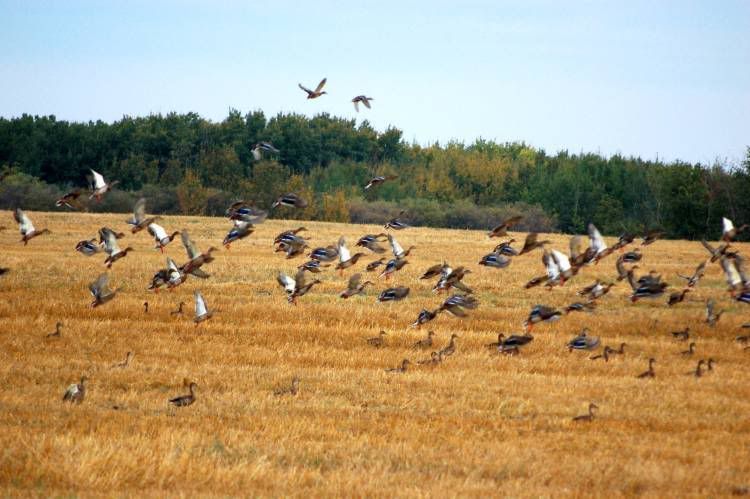BH, I like your negativity, and appreciate it. If everyone agreed with each other on here, it wouldnt make for a good talk forum

The biggest thing I got from your post here is that your discussion mainly is directed to a.m. bed hunting. THIS is the hardest of the two, and more times than not an a.m. bed hunt will not work for you. A.M. hunts has to have everything lined up perfectly. PM bedroom hunting is where I am mostly focussed. Also, im referring to hunting bucks 3.5 years and older. Statagies for hunting younger bucks arent as extreme imo. My thinking of bedroom hunting is NOT for RUT hunting either... as RUT tactics will not require closing in on bedrooms, and would shift more so downwind travel routes of doe bedding areas, funnels, shelfs, saddles, parallel trails, etc
To me, this strategy and the use thereof would be predicated by many factors. Most of which would be the lay of the land that you are hunting.
My thoughts exactly. One thing that may bring us closer in thoughts too though is im talking about bow hunting. Strategies with a firearm differs due to the fact of not having to close the ditance as close on a buck.
In my mind, it's not that they are bedding there or even how much consistancy they have to return there, but more how they get to and from there. even after you figure out how you think they are approaching the bed, you must ask yourself if this is always the case? Does the buck come from only one direction to the bed, odds are NO! Is he always going to come in before first light and if so, how close by will he be when you come in and will he see or hear your approach? How can you prevent this....you probably can't.
I agree the routes taken to and from the bed are where you mostly are going to get a crack at him, however,knowing where and when he beds an area allows you to narrow the routes closer to his bed to arrow him. If you are hunting halfway between bed and food, and say he has two exits from his bed, that splits into 6 routes to food. Covering the 2 exit routes closest to the bed increases your chances. Hunting with a firearm, I wouldnt feel you need to get close ot his bed at all.
As for always coming into his bed the same route, I feel the buck will only use the bed during certain winds, therefore I do think he will most likely use the same entrance to the particular bed, due to the wind direction that has hunter on that bed to begin with.
Another thing that no one seems to have mentioned is this. if you find beds during the daylight hours, did you jump the deer using the bed on your approach? if so, did you booger that area up? if you did not jump a deer off the bed, then how much faith do you have that this bed is one that is used with any regularity....?
Here is the most important part to my thoughts and plans on bedroom hunting. 1. You need to locate these beds during post season. Mark them on your map, plan when,where, and how to hunt this bed. When a hunter finds the "right" buck beds, he/she can tell if the bed has been used year after year, especially with aged buck rubs around the bed. As for bumping a buck from his bed during season.. well if he is a mature buck then you best move on to your next buck bed that season. This is also the reason why I dont think a hunter can hunt a particular buck bed more that 2-3 times per the entire season.
You find a bedding area while scouting. You decide to hunt it, so you return later with a stand and put it up....now, how much time do you allow for your scent to disperse before hunting the stand and how do you determine which way the buck is coming from without actually seeing the buck during one of his approaches. many times bucks use rarely used trails and these can be difficult to find, especially if each trail is one of many that he uses ...
This again falls back to you have to locate and plan the beds during post season. However, if you locate a buck bed and want to hunt it during season... I hope you located it and bumped in the PM because thats your one crack at that buck right then. You have to set up on him that evening, beat him to his bedroom the next morning. When he returns and smells your scent, he is off to another bedding area. You cannot return a week or so and hunt him.
Now, once you set up on stand two-three hours before daylight to insure that IF the deer comes to that bed that morning, you will be there well before him and he probably won't see or hear you making your way there in the dark, at what point do you decide that he is not coming? Are you sitting within sight of the bed itself? And if so, when do you decide to leave? Obviously, if he was coming he would be there at first light or maybe even before then....right?
In the a.m hunts again, they are much harder and there is a pont you didnt mention, what if he returns and you cant shoot him!
Here is my thoughts on this: If you are perched, and your buck doesnt return to this bed, or maybe seen,smelled you and you didnt know it. I think after hunting the bedding for a few hours, you need to have your exit route planned out and leave. IF the buck did return and you cant shoot him for whatever reason, then ino, you are tree'd. Better hope the wind doesnt shift to alert him of your presence. Best case scenario is if the wind shifts during the day and he moves out, or even moves within range.
The reason for all the negativity is to try and persuade you to adopt another strategy and to say that what you are attempting to do is as difficult a way of deer hunting as there is, other than maybe jump shooting them like rabbits. Too many things have to be perfect for this to workout,imo.
Your best bet is to study the property from above,(aerials) taking note not only of the lay of your land, but also of the property around you. Odds are that deer are merely moving through your property and thusly, you should spend more time figuring out ambush points between possible points A and B....and not setting up on points A or B. Don't be as concerned with where they are going or when they will be there, but more about HOW they get there...
When i adopted a strategy of finding travel corridors and stopped trying to depend on feeding and bedding areas, my success increased dramatically. One reason for that is that I always tried to set up where deer spent the least amount of time and NOT where they spent the most time....think about that.
Now, when adopting this strategy, you must understand that you will see deer for a very little amount of time, as they are passing by you on their daily travels. If you set up correctly, they'll never know you are there or ever was there. You may see deer at any time, but when you do, be ready to shoot. You may only get a few seconds to a minute or so to decide and shoot.
it has been my experience that traveling deer are less keen that those feeding, bedding or simply standing around in an area, for whatever reason. Deer on the move are less likely to see, hear or smell you as they are passing by than they are if a groups of them are feeding around your setup.....
That is why I prefer to hunt travel corridors and try to stay away from bedding and feeding areas.
enjoy the process...
I think we share a lot of the same thoughts. I just try and think more on the lines of a bowhunter, having to get closer.
I think a mature buck spends so much of his daylight hours bedding, that if you dont get close to where he is, and try and harvest either him coming in or out of his bed, or inside his staging area, your chances continue to drop.
When it comes to the study of maps, planning the hunt...you and I left one the most important part off all the topics mentioned above:
I think the most important part is to make sure you have a very well planned out entrance and exit route to and from your tree.
This is the thing I feel can make or brake any hunting setup plan.
Here is the thing, I know that the mass majority of you guys on this site have years and years more experience hunting mature bucks than I do. IMO, the guys on this site that continues to harvest "mature" bucks year after year, has figured out something that works for them. To be harvesting mature bucks year after year requires a lot of lessons hard learned too.
I have had the blessings of being able to chase the same 2 mature bucks for the last 4 years. I still have not killed these guys, but the have taught me a lot about how hunting a mature bucks will differ from hunting younger bucks!


